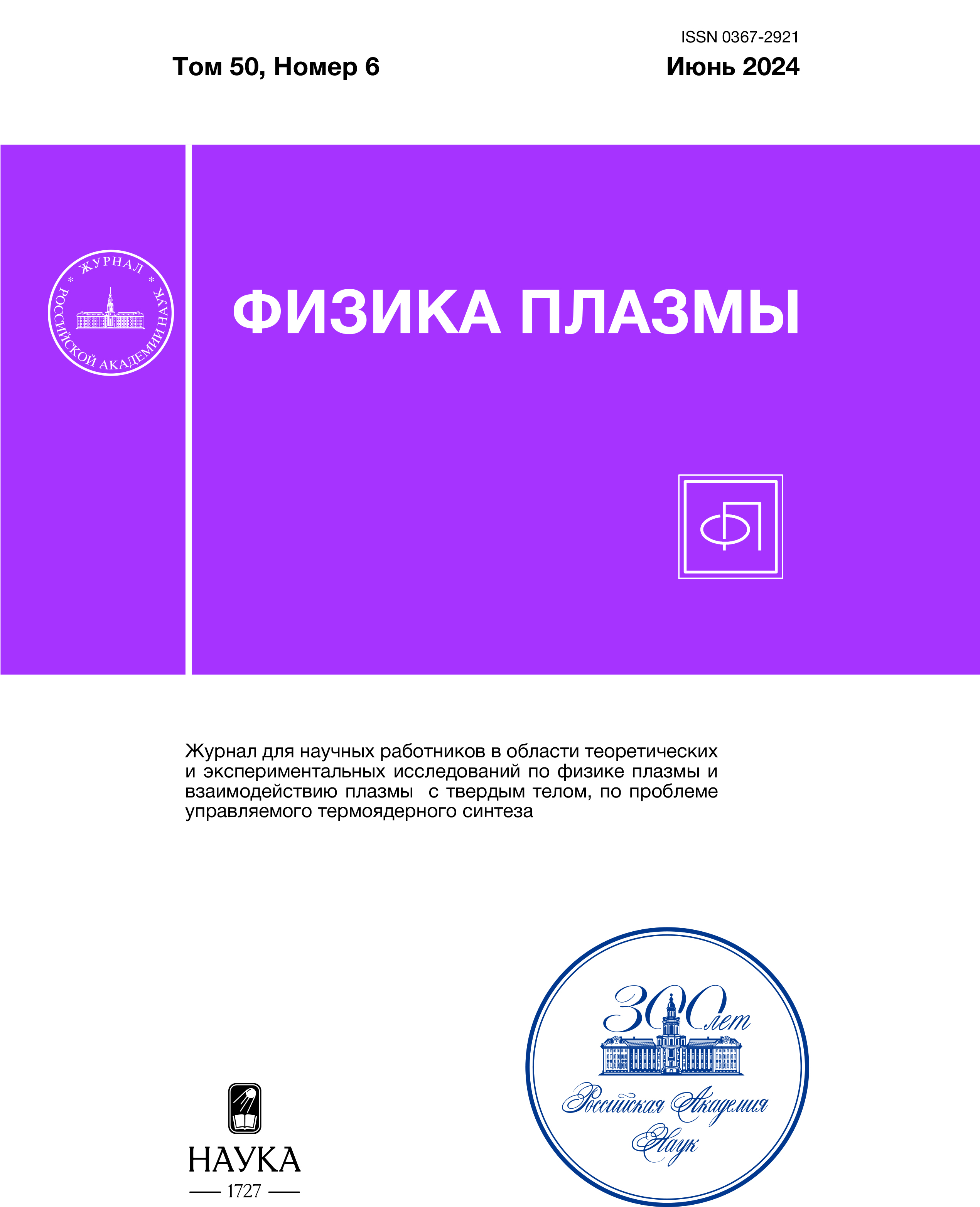THE DYNAMICS OF XUV PLASMA EMISSION IN A LOW-INDUCTANCE VACUUM SPARK AT THE INITIAL STAGE OF DISCHARGE DEVELOPMENT
- Authors: Antsiferov P.S.1, Stepanov L.V.1,2, Matyukhin N.D.1,3
-
Affiliations:
- Institute for Spectroscopy, Russian Academy of Sciences
- National Research University Higher School of Economics
- Moscow Institute of Physics and Technology (National Research University)
- Issue: Vol 50, No 6 (2024)
- Pages: 701-706
- Section: PLASMA RADIATION
- URL: https://cardiosomatics.ru/0367-2921/article/view/668855
- DOI: https://doi.org/10.31857/S0367292124060076
- EDN: https://elibrary.ru/PSOPBJ
- ID: 668855
Cite item
Abstract
The emission dynamics of a vacuum spark with a peak current of ∼50 kA in the wavelength range of λ = = 5–40 nm is analyzed. The radiation was detected by means of the microchannel-plate detectors with a frame temporal resolution of 20 ns. The technique of simultaneous acquisition of the spatial distribution and spectrograms of plasma emission allowed resolving characteristic stages of discharge development. At the initial stage (200–300 ns), strong emission of multiply charged iron ions FeV–FeVIII is detected. This emission disappears later (300–400 ns) and reappears again after 400 ns. The possible role of runaway electrons in the described phenomenon is discussed. The found regime of the discharge can be used upon development of the radiation sources in the extreme UV range.
About the authors
P. S. Antsiferov
Institute for Spectroscopy, Russian Academy of Sciences
Email: ants@isan.troitsk.ru
Troitsk, Moscow, Russia
L. V. Stepanov
Institute for Spectroscopy, Russian Academy of Sciences; National Research University Higher School of EconomicsTroitsk, Moscow, Russia; Moscow, Russia
N. D. Matyukhin
Institute for Spectroscopy, Russian Academy of Sciences; Moscow Institute of Physics and Technology (National Research University)
Email: stepanovlavrentij@gmail.com
Troitsk, Moscow, Russia; Dolgoprudny, Russia
References
- Короп Е.Д., Мейерович Б.Э., Сидельников Ю.В. // УФН.1979. Т. 129. Вып.1. С. 87.
- Koshelev K.N., Pereira N.R. // J. Appl. Phys. 1991. V. 69(10). P. R21.
- Banine, V.Y., Koshelev K.N., Swinkels P.M. // J. Phys. D: Appl. Phys., 2011. V.44 (25). 253001. doi: 10.1088/0022-3727/44/25/253001
- Анциферов П.С., Дорохин Л.А. // Физика плазмы. 2022. T. 48.№11. C. 1086.
- Antsiferov P.S., Dorokhin L.A., Krainov P.V. // Rev. Sci. Instr.2016. V. 87. 053106. doi: 10.1063/1.4945654
- NIST Chemistry WebBook [Электронный ресурс]. URL: https://webbook.nist.gov/chemistry/
- Lie T.N., Elton R.C. // Phys. Rev. A3. 1971. P. 865.
- Форрестер А.Т. Интенсивные ионные пучки. М.: Мир, 1992.
- Ф. Чен Введение в физику плазмы. М. : Мир, 1987.
- Dricer H. // Phys. Rev. 1958. V. 115. P.238.
- Рябцев А.Н., Чурилов С.С. //УФН.2009.Т. 139.№3. С. 305. doi: 10.3367/UFNr.0179.200903j.030
Supplementary files











